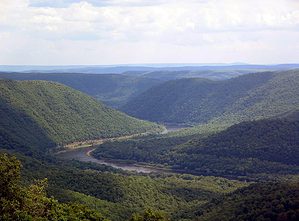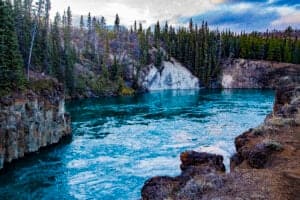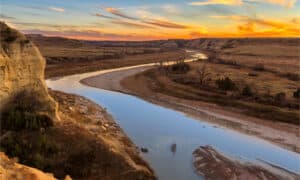
The Mississippi River flows through many cities, like Memphis, that built up around them. All along the shoreline, and in the water, many aquatic snake species thrive.
©iStock.com/dosecreative
Home to around 50 species of snakes, of both venomous and harmless varieties, the United States offers plenty of snake-spotting opportunities. Now, whether or not you want to spot the snakes is a call we can’t make for you, but the snakes sure can! They’re less than eager to run into humans and would much prefer staying far away from bipedal creatures.
Every state in the country has at least one venomous species of snake, save for Hawaii, Rhode Island, Alaska, and Maine. Admittedly, there are more venomous than harmless snakes in the number of species. However, many of the most commonly spotted snakes are harmless. It’s best not to take your chances, though, as many species can be deadly.
When you hit the riverfront, be sure to avoid snakes, particularly any you aren’t 100% sure able to identify.
The Most Snake-Infested Rivers in America
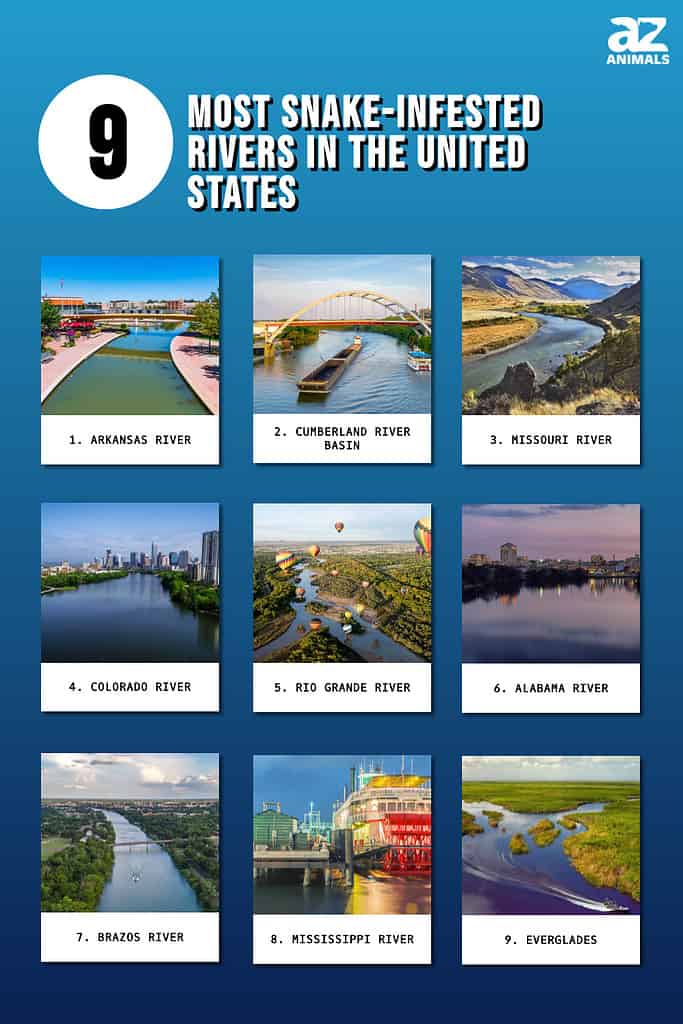
With approximately a quarter million (250,000) rivers flowing along a total of about 3.5 million miles, the United States is rife with opportunities for water snakes to find homes. Of course, some of the rivers and waterways are far more conducive to reptiles than others, with some being just “okay” for them. The factors for snakes infesting an area may vary largely, but some would include things like food supply and predation.
Arkansas River – American West to Southeast

The Arkansas River flows through a populated area of Pueblo, Colorado.
©iStock.com/pabradyphoto
Nine common species of water snakes may be found skimming across the waters, baking on the shore of, or drifting downstream in the Arkansas River. Semi-aquatic or aquatic, it doesn’t matter – these reptiles are everywhere! Well, thankfully not literally everywhere, but they’re extremely present in the river and often seen basking nearby, taking in the sun.
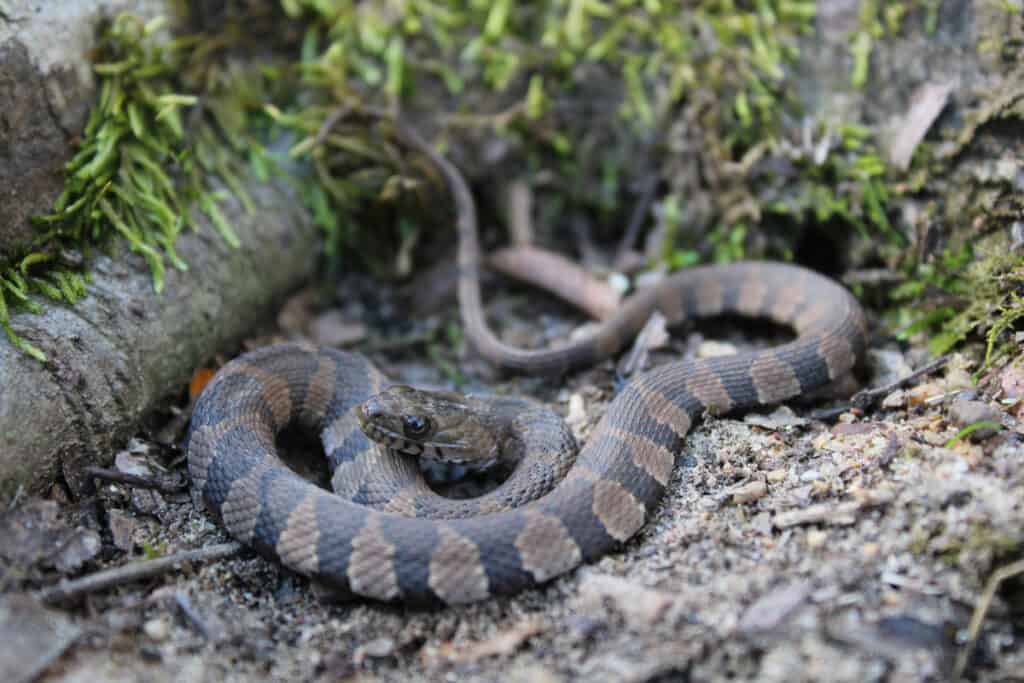
The midland watersnake lives along the Arkansas River and Cumberland River.
©Tucker Heptinstall/Shutterstock.com
Snakes you’ll see along the Arkansas River include:
- Midland water snake
- Broad-banded water snake
- Diamondback water snake
- Graham’s crayfish snake
- Gulf swamp snake
- Green water snake
- Northern cottonmouth
- Queen snake
- Plain belly water snake
Cumberland River Basin – American Central East
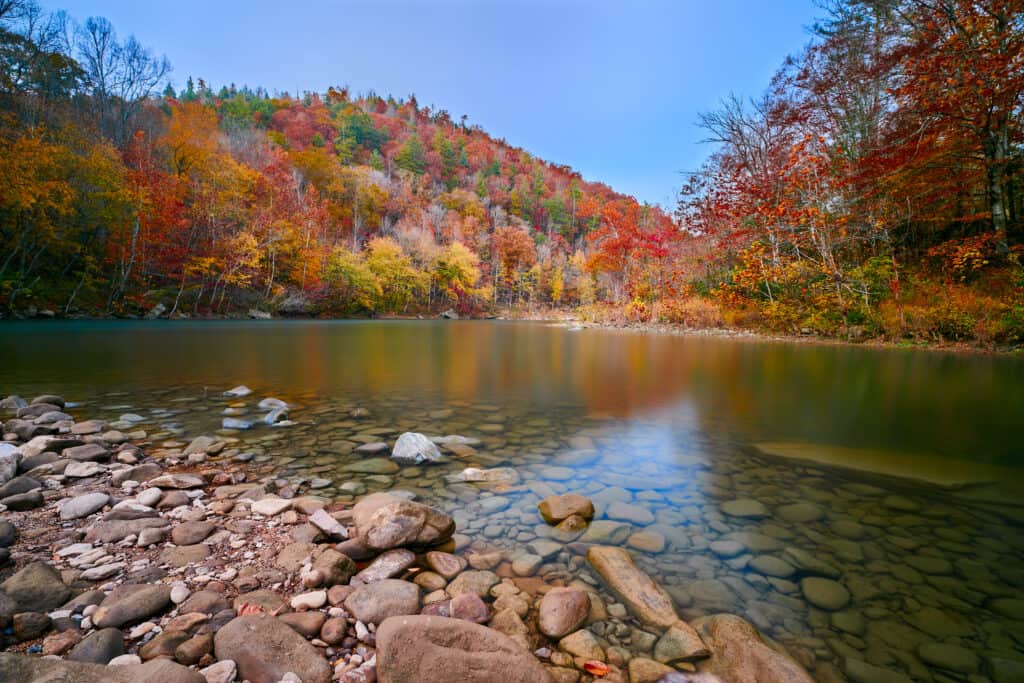
The leaves start to change color in the Big South Fork National River and Recreation Area in October, and the scenery is simply gorgeous.
©Patrick Jennings/Shutterstock.com
Flowing through both Kentucky and Tennessee, the Cumberland River is home to a wide range of both harmless and venomous snakes. As they say, you’ll run into three things in summertime in the area: poison ivy, ticks, and snakes. And while many of us feel that snakes are equally as awful as the first two on the list, snakes actually do serve a purpose in the ecosystem where they live. Killing off some pests and scaring off others, snakes can even be “friendly” to many of us. Just don’t touch them, especially as identifying “good” versus “bad” snakes can be tricky.
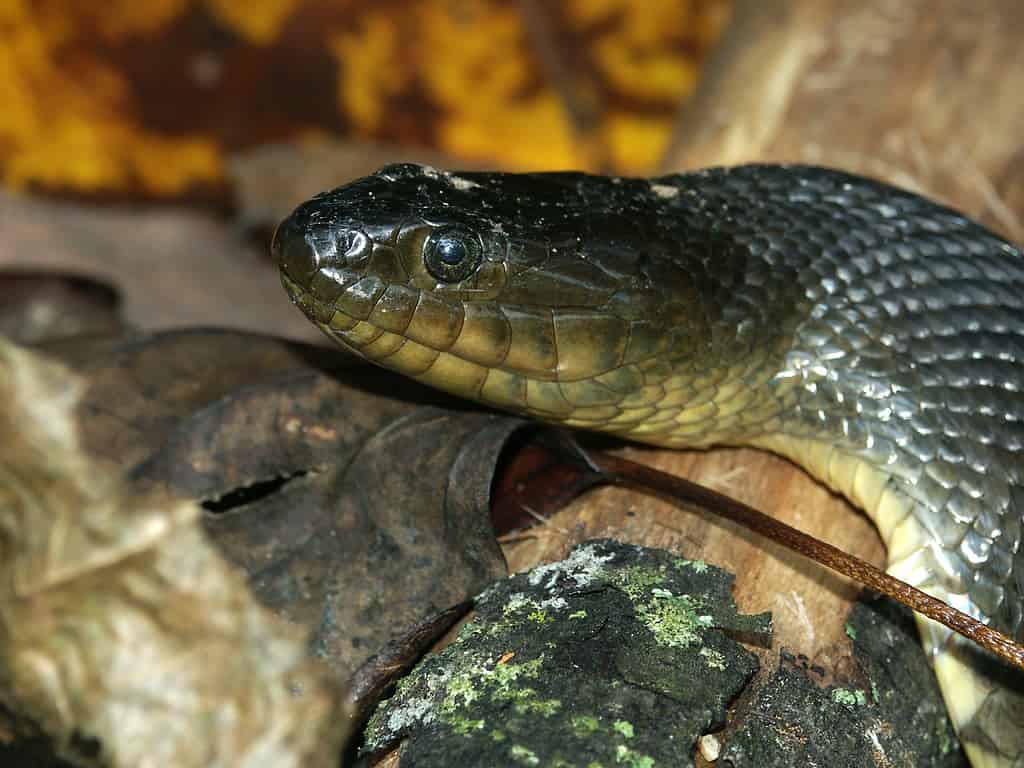
The green water snake is found only in the southeastern United States.
©Jason Patrick Ross/Shutterstock.com
Along Cumberland River, you’ll find:
- Timber rattlesnake
- Cottonmouth
- Copperhead
- Northern water snake
- Common water snake
- Midland water snake
- Mississippi green water snake
- Plain-bellied water snake
- Copper-bellied water snake
- Yellow-bellied water snake
- Broad-banded water snake
- Southern water snake
Missouri River – American Midwest
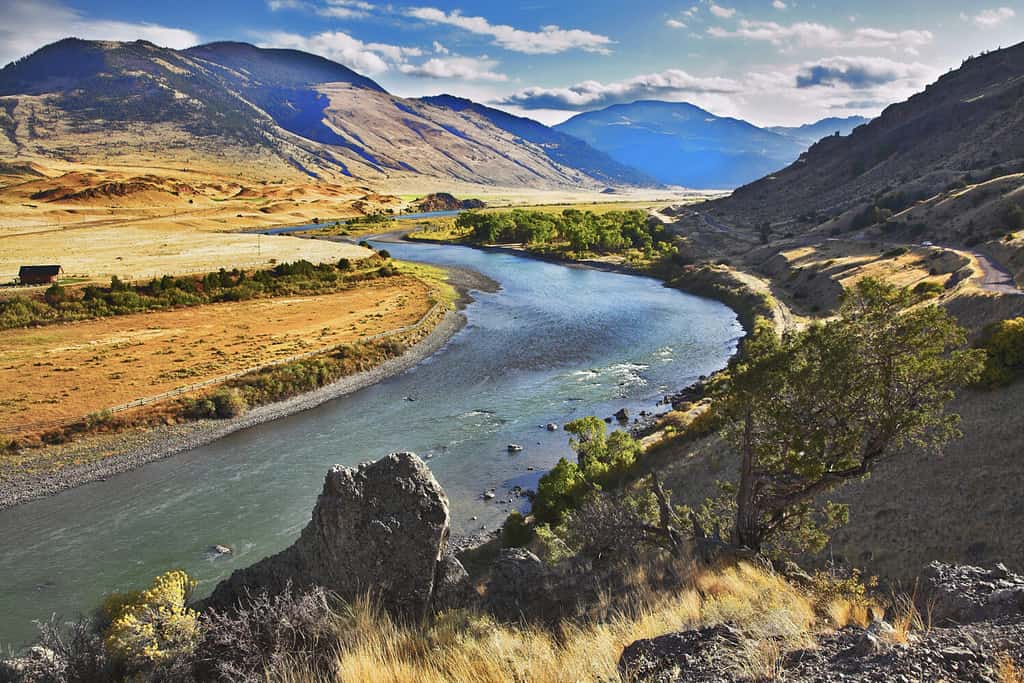
The Missouri River is the longest river in America — and home to many types of snakes.
©kavram/Shutterstock.com
Known as the longest river in the United States, the Missouri River is home to a huge array of wildlife species, including a ton of different snakes. The 2,540 miles of waterway may be home to as many as 47 different snake species and something like 900 animal species nearby. That’s plenty to keep the snakes busy at mealtimes and, perhaps more, for you in avoiding the scaly reptiles.
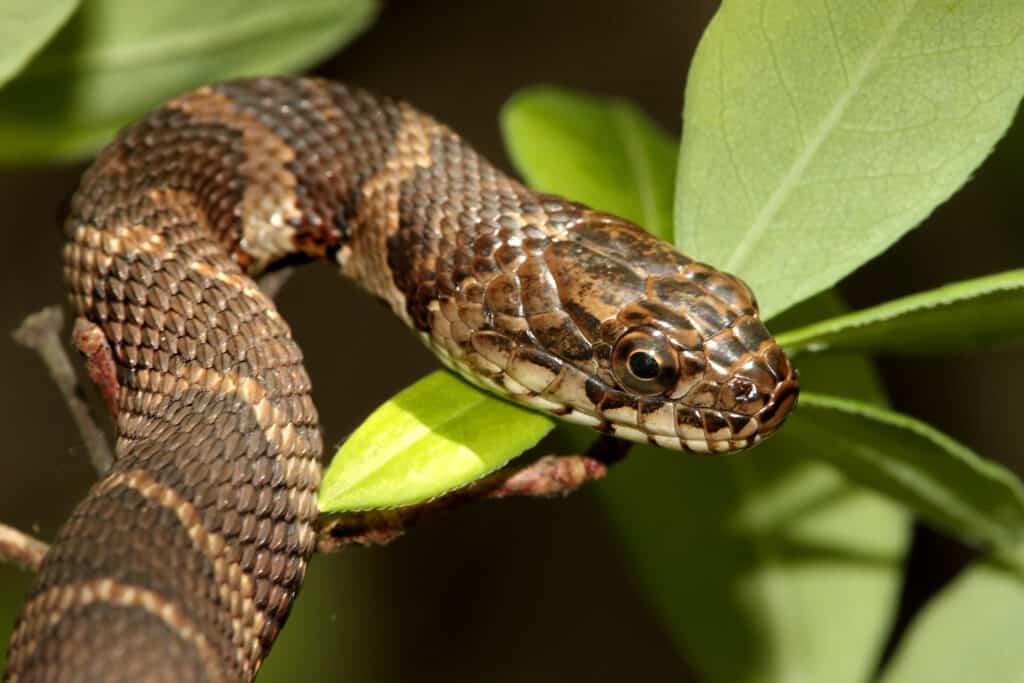
The Northern watersnake loves along the Missouri River and Colorado River.
©Steve Byland/Shutterstock.com
Making your way along the Missouri River, you could run into:
- Northern water snake
- Diamondback water snake
- Yellow-bellied water snake
- Graham’s crayfish snake
- Mississippi green water snake
- Western mud snake
- Water moccasin (cottonmouth)
- Broad-banded water snake
Colorado River – American Southwest
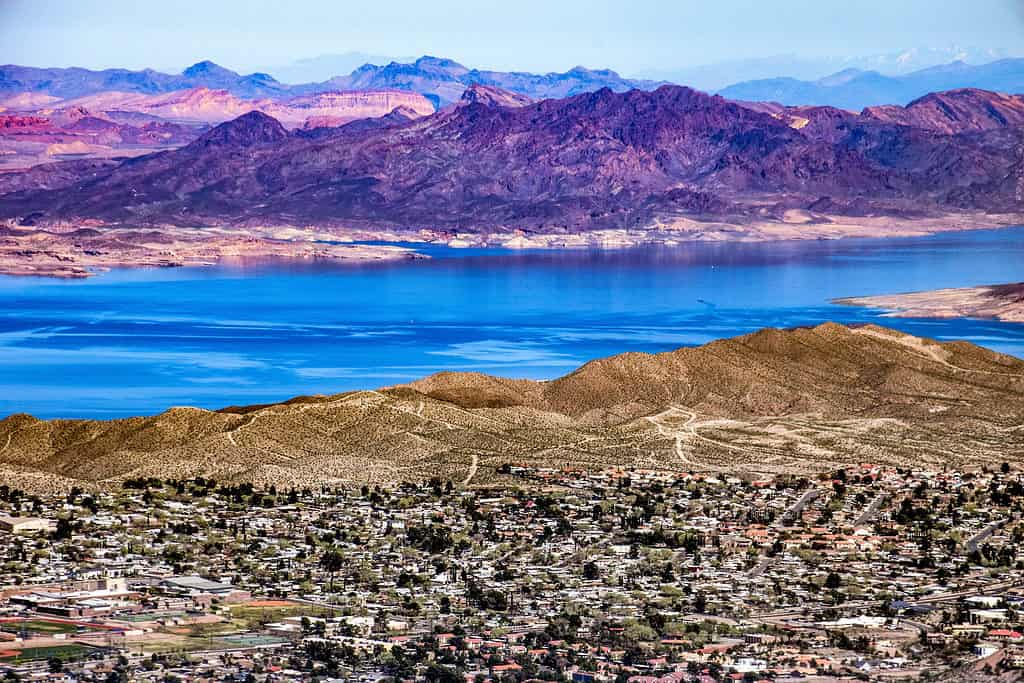
The Colorada River runs through Boulder City with its stunning waters and many reptilian residents.
©iStock.com/Rodrigo A. Rodriguez Fuentes
Beautiful Colorado, filled with glorious mountains, scenic byways, and landscape begging for exploration, is home to a huge number of snakes, particularly along the Colorado River and nearby areas. Heavy regulations control both recreation and industrial use of the river, which largely helps keep the wildlife flush in the region. Some 47 species of reptiles alone exist around the river, with many snakes included, some aquatic, semi-aquatic, and many terrestrial.
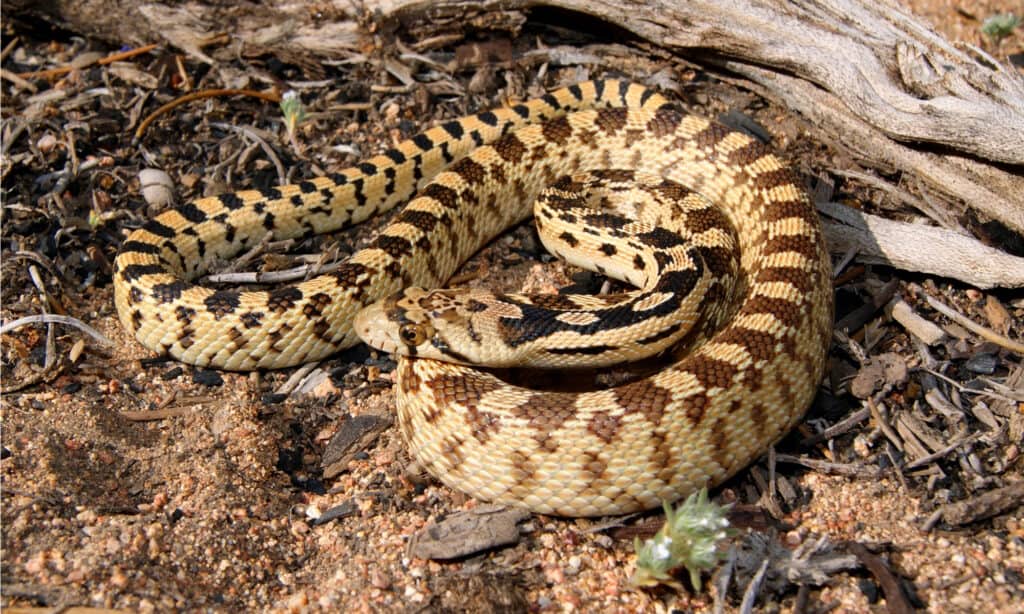
Great Basin Gopher Snake, Pituophis catenifer deserticola, slithers along the Colorado River.
©Matt Jeppson/Shutterstock.com
Some of the snakes you could run into in the snake-infested river could include:
- Great basin gopher snake
- Colorado bull snake
- Northern water snake
- Black neck garter snake
- Plains garter snake
- Smooth green snake
Rio Grande River – American Southwest
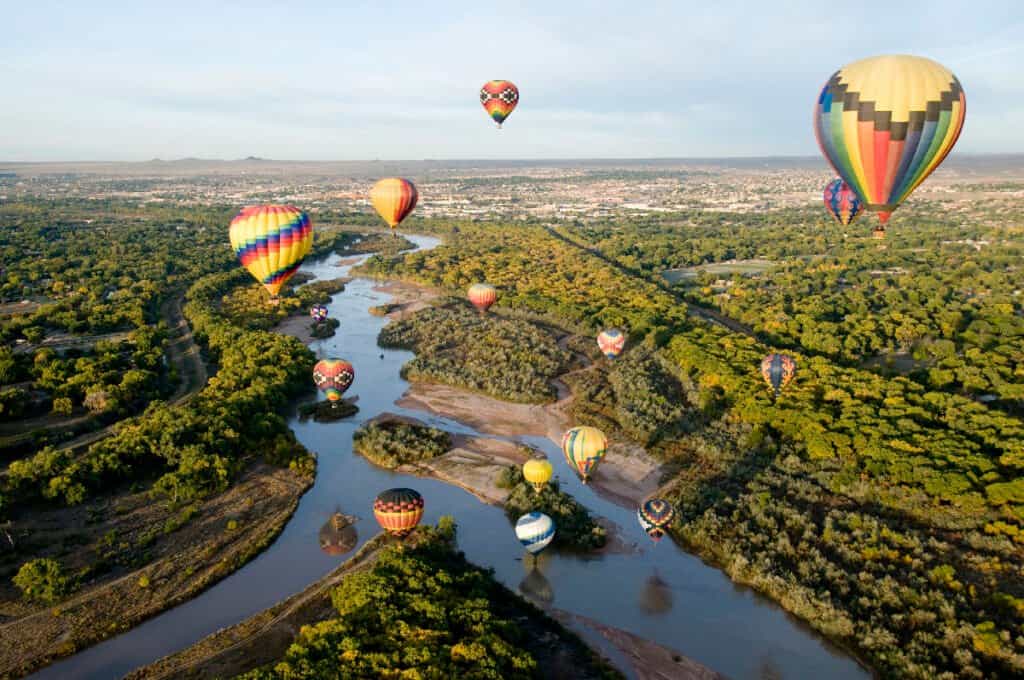
Rio Grande is a famous crossing between the U.S. and Mexico.
©iStock.com/Greg Meland
Roaring down from the Colorado Rockies into the Gulf of Mexico, the Rio Grande River flows through dams and irrigation diversions but remains one of the longest rivers in the United States. Some 30 species of snakes live near the river, particularly the lower Rio Grande, with just two varieties being venomous. The plethora of wildlife surrounding the river helps to draw snakes and other predators in for feeding, as well as tourists for wildlife viewing from safe vantage points.
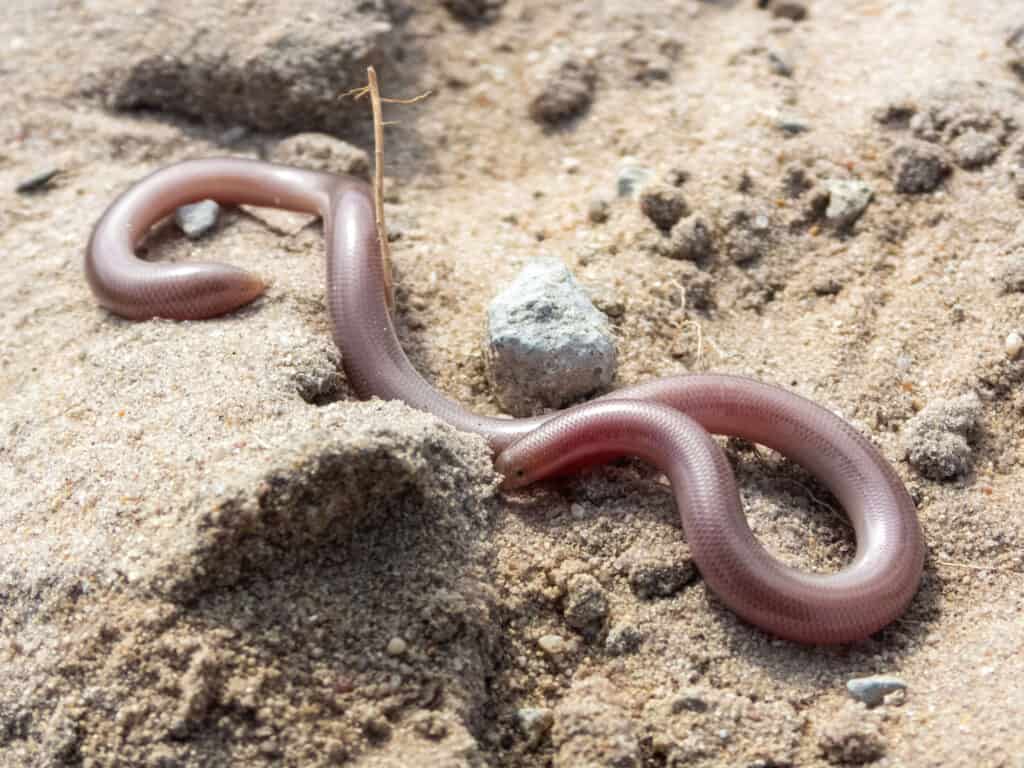
The Texas blind snake looks like an
earthworm
at first sight.
©iStock.com/Willem Van Zyl
Some of the snakes you could spot along the Rio Grande might include:
- Texas blind snake
- Flat-headed snake
- Western diamondback rattlesnake
- Texas coral snake
- Texas indigo snake
- Great Plains rat snake
- Gulf Coast ribbon snake
- Bullsnake
- Checkered garter snake
- Schott’s whipsnake
Alabama River – American Southeast
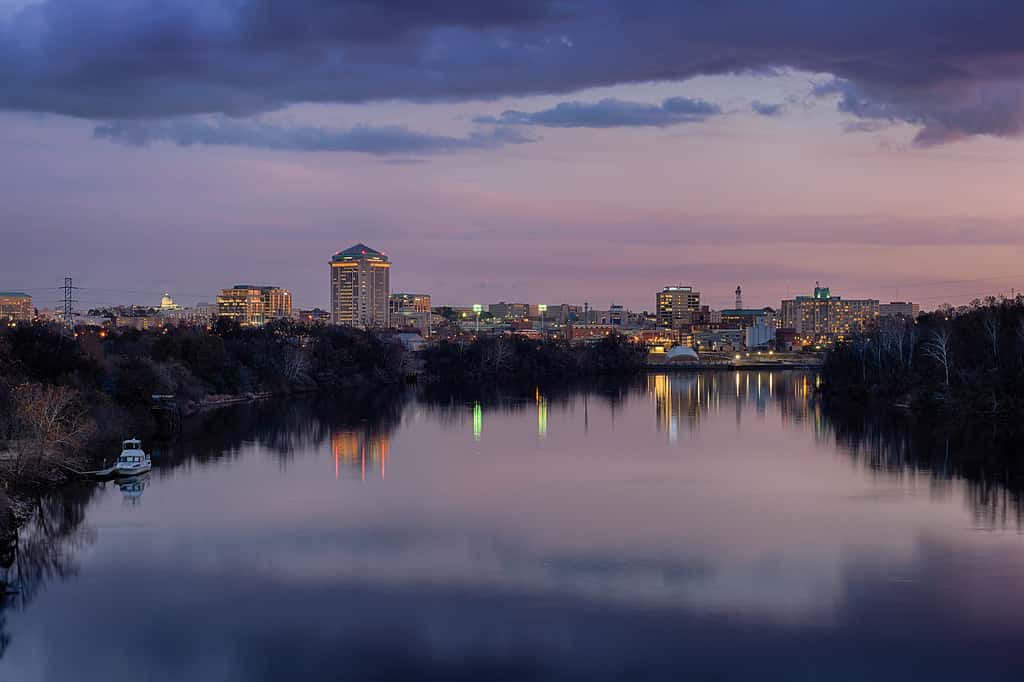
Alabama River is another snake-infested river flowing through a major city.
©Nagel Photography/Shutterstock.com
Another river teeming with snakes may be found in the southeastern portion of the United States – the Alabama River. Flowing some 300-plus miles, the Alabama River is home to many wild animals, with numerous fish species drawing them in. White bass, striped bass, crappie, catfish, and largemouth bass are some of the frequent catches along the waterway. The rivers of Alabama are known to have some of the most diverse collections of fish in them, which means water snakes are plentiful, too. These aquatic reptiles feed primarily on fish.
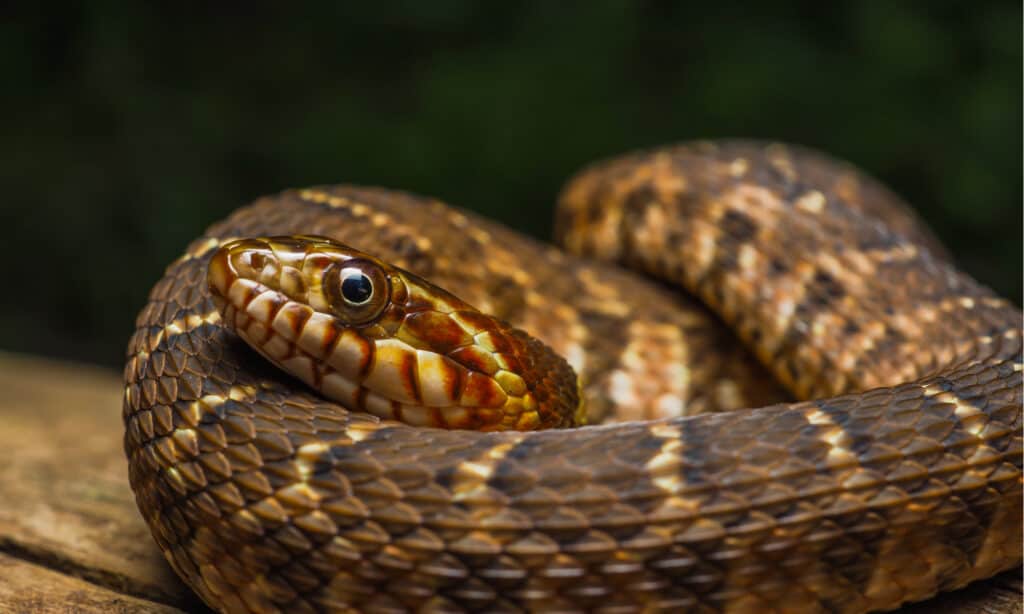
The Plain-bellied watersnake may frequently be found throughout America’s waterways.
©Tyler Albertson/Shutterstock.com
Some snakes you might spot in and near the Alabama River include:
- Midland water snake
- Plain-bellied water snake
- Diamond-backed water snake
- Queen snake
- Brown water snake
- Banded water snake
- Northern cottonmouth
- Gulf salt marsh water snake
- Mississippi green water snake
- Gulf swamp snake
Brazos River – American Central South
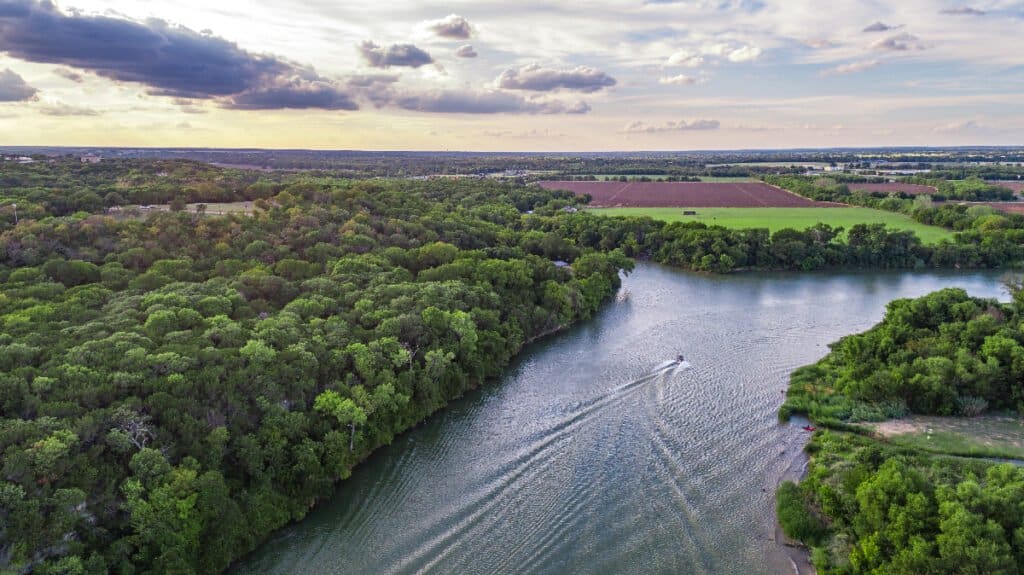
The Brazo River’s name is Spanish for “the arms of God.”
©davisdeatonphotography/Shutterstock.com
Perhaps a less well-known river than many others on this list, the Brazos River is one of Texas’s longest rivers. Sometimes known as the Rio de los Brazos de Dios (translated as the “River of the Arms of God”), the waterway opens out into the Gulf of Mexico with a 45,000 square-mile drainage basin. Often, the river is used to mark boundaries between East and West Texas. And though many outside the state might be less familiar with it, the Brazos River is closely tied to Texas history, particularly during the Texas Revolution and the Austin settlement periods.
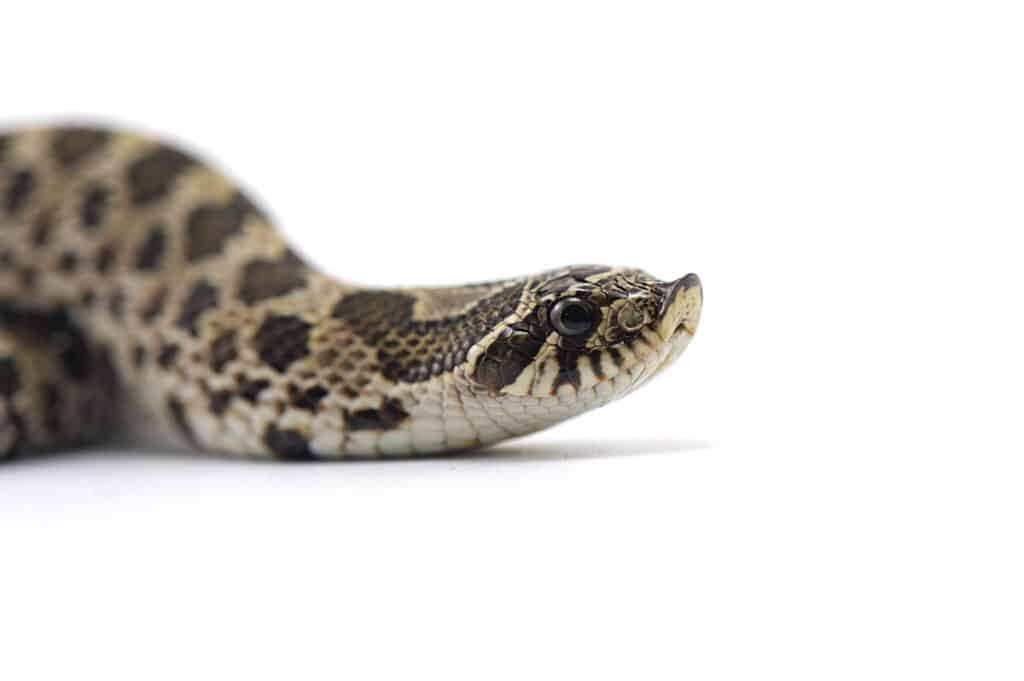
The hognose snake with a snout somewhat reminiscent of, well, a hog.
©PetlinDmitry/Shutterstock.com
The bio-diverse river has many wild snakes all along the 840 miles of flow, including:
- Brazos River water snake
- Timber rattlesnake
- Diamond-backed water snake
- Texas coral snake
- Copperhead
- Cottonmouth
- Western diamondback rattlesnake
- Hognose snake
- Broad-banded water snake
- Bullsnake
The Mississippi River – American Midwest and Southeast

The Mississippi River flowers through many states down toward the Gulf of Mexico in Louisiana.
©pisaphotography/Shutterstock.com
Possibly the most famous river in all of America, the Mississippi River is one of the most snake-infested waterways you’ll come to. Thankfully, in most areas, the snake population is skittish enough that you won’t see the reptiles. In fact, snakes hate being around humans and will dart away if they’re able to escape being seen. Of course, that doesn’t guarantee anything for anyone, and the many snakes that get spotted are as unhappy about it as the folks who spot them.
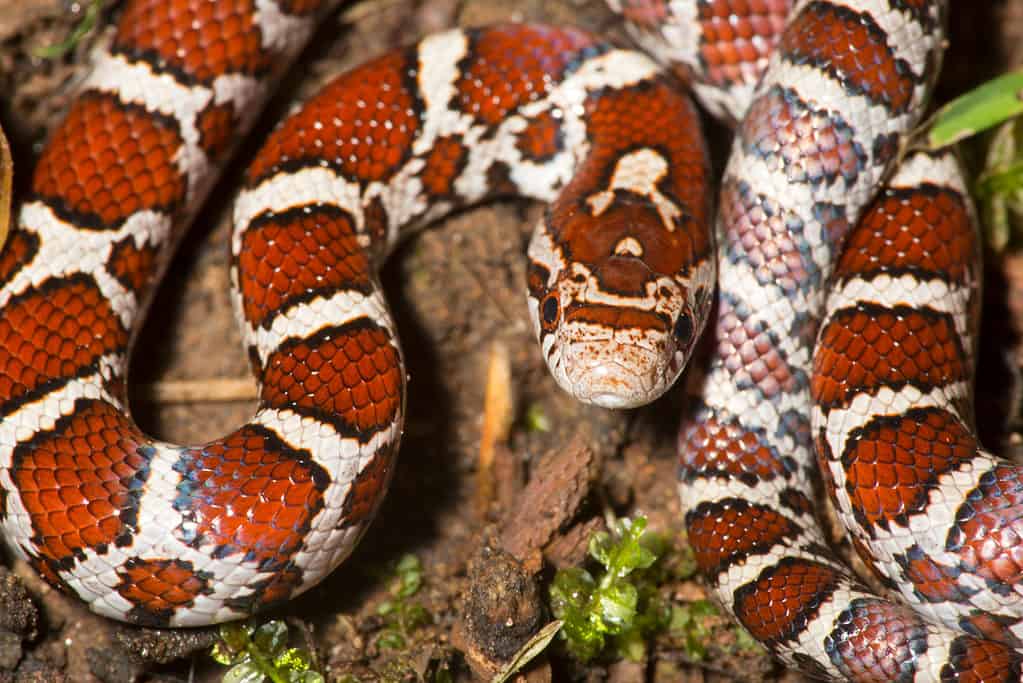
Eastern milk snake, Lampropeltis triangulum, lives along the Mississippi River.
©Jeff Holcombe/Shutterstock.com
Numerous species of snakes live near the Mississippi River. Some of those aquatic and semi-aquatic species include:
- Northern water snake
- Bullsnake
- Eastern milksnake
- Plains garter snake
- Eastern garter snake
- Plains hognose snake
- Eastern hognose snake
- Timber rattlesnake
- Eastern yellow-bellied racer
- Northern red-belly snake
- Western fox snake
- Texas brown snake
The Everglades – Florida
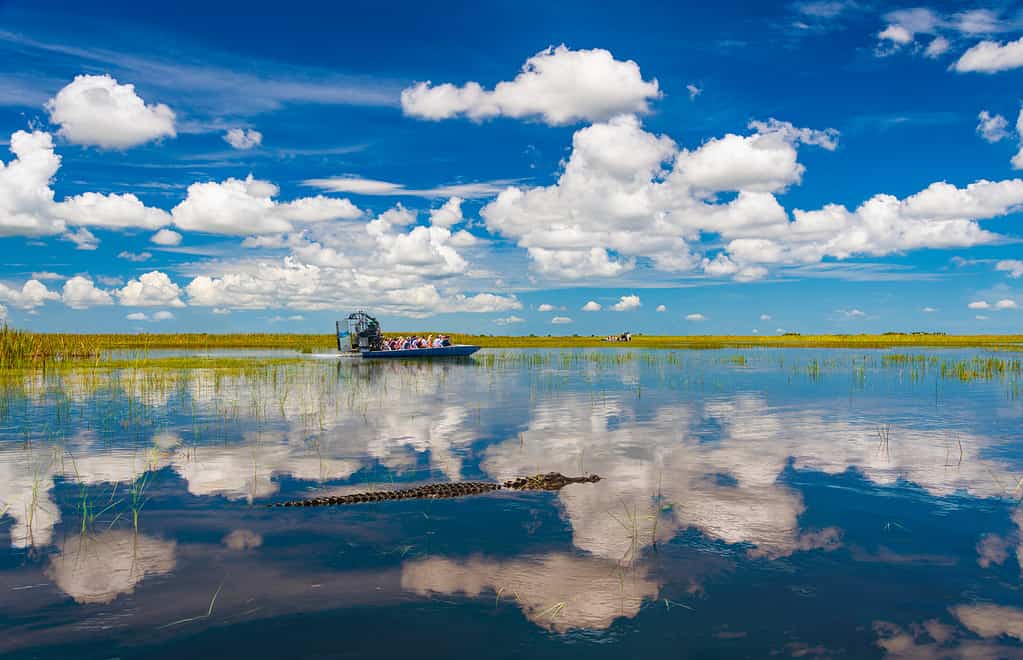
Everglades National Park in Florida is one of the most snake-infested locations in all of America.
©allouphoto/Shutterstock.com
Okay, so the Everglades isn’t technically a river, but with the tributaries and flowing bodies of water all around, it’s close enough when it comes to exploration and adventure. And being the Everglades, tons of snakes are going to be found in the waters here! In fact, the Everglades are the most snake-infested portion of the whole state and one of the most snake-infested areas in the country. The Everglades also happen to be the largest surviving subtropical wilderness in all of the United States.
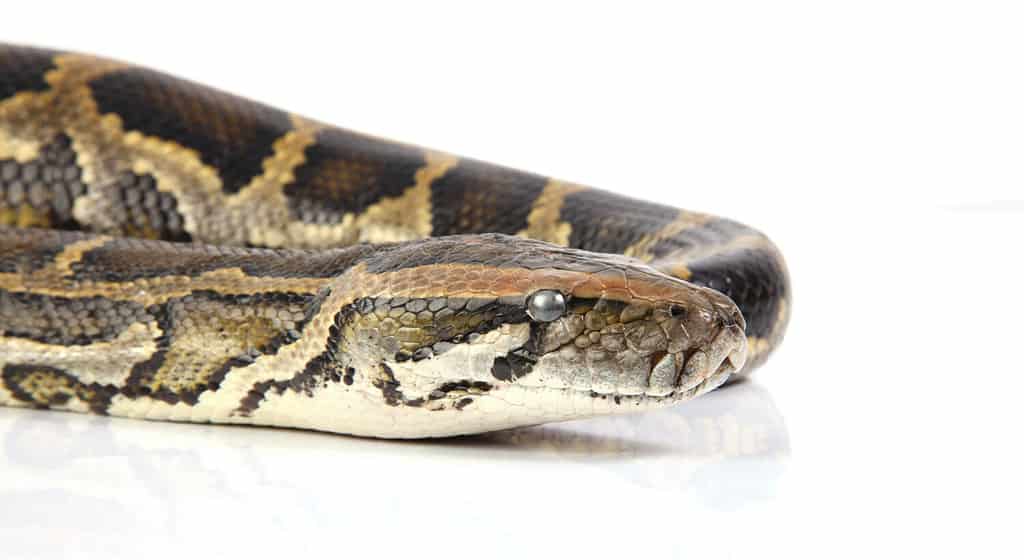
The
Burmese
python is a surprising snake to find in the Florida Everglades.
©White Space Illustrations/Shutterstock.com
Here you’ll find both venomous and nonvenomous snakes of many varieties, including:
- Burmese python (pets released into the wild that then overpopulated the area!)
- Eastern diamondback rattlesnake
- Copperhead
- Florida cottonmouth
- Florida scarlet snake
- Eastern racer
- Boa constrictor
- Southern ringneck snake
- Eastern indigo snake
- Corn snake
- Yellow rat snake
- Eastern mud snake
- Everglades rat snake
- Eastern hognose snake
- Scarlet kingsnake
- Florida kingsnake
- Eastern coral snake
- Eastern coachwhip
- Mangrove salt marsh snake
- Rough green snake
And dozens more! It truly is a snake’s paradise and an ophidiophobe’s nightmare.
Watch Our YouTube Video on These Snake-Filled Rivers
The photo featured at the top of this post is © Nagel Photography/Shutterstock.com
Thank you for reading! Have some feedback for us? Contact the AZ Animals editorial team.



